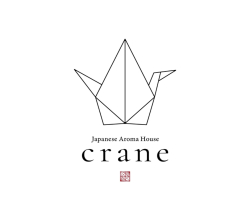Info Type
View Option
Sort by Month
Sort by Category
Back
This text has been translated by auto-translation. There may be a slight difference between the original text and the translation. (Original Language: 日本語)
2022/10/3 - 2022/12/10 / 千葉県 佐倉市 / Other

| Venue | National Museum of Japanese History, Special Exhibition Room A |
|---|---|
| Address | 285-8502 千葉県 佐倉市 城内町117 |
| Date | 2022/10/3 - 2022/12/10 |
| Time | 9:30 minute(s) - 16:30 minute(s) |
- [Time detail]
・ Admission until 30 minutes before closing.
・ Closed : Mondays ( If Monday is a holiday, the museum will be open and closed the following day )
- [Getting here]
By train】
・ 15 min. walk or 5 min. bus ride from Keisei Sakura Station on Keisei Electric Railway
・ 15 min. bus ride from Sakura Station on East Japan Railway
[By car]
・ 15 min. from Yotsukaido IC or Sakura IC on Higashi-Kanto Expressway
- [Venue detail]
National Museum of Japanese History 117 Jonouchi-cho, Sakura-shi, Chiba
International Exhibition "Kaya - A History of a Kingdom in Ancient East Asia -"
By experiencing the history of Kaya and the history of exchange between Kaya and Japan, we will think about the exchange between Japan and Korea that has continued from ancient times to the present and into the future.
- [Contact]
- 050-5541-8600 ( Hello Dial )
- [Registrant]国立歴史民俗博物館
- [Language]日本語
- [TEL]050-5541-8600
- Posted : 2022/08/10
- Published : 2022/08/10
- Changed : 2022/08/14
- Total View : 998 persons
- Find local business with Town Guide
-
- We offer Japanese techniques and careful...

-
We offer Japanese techniques and carefully selected chemicals that are good for your hair and scalp, even though we are located in New York. We would like to take this opportunity to let more people k...
+1 (646) 912-9644Aube Beauty Salon New York
-
- GIIP is an accounting firm that provides...

-
A bridge between the U.S. and Japan for international taxation and international business, GIIP is an accounting firm providing U.S. related solutions for Japanese clients. From corporate incorporatio...
+1 (212) 518-7065GIIP 日米国際会計事務所
-
- Sushi restaurant Sushi Kai offers fresh ...

-
Sushi restaurant Sushi Kai Omakase course is hearty and filling with fresh fish at an affordable price. We offer a one-hour omakase course for $85 per person, which includes 3 appetizers, 10 pieces ...
+1 (914) 396-7705Sushi Kai
-
- You can transfer your IRA (Individual Re...

-
Move your IRA ( Individual Retirement Accounts ) to a real estate investment ? Investing in real estate is a lot of work💦 We will find the right investment approach, strategy and property for you !...
+1 (361) 480-2220GoProfuture LLC
-
- General repairs, sheet metal painting, u...

-
Experienced Japanese staff provides reliable service. Total support for your car life in New York, New Jersey and Connecticut. Please feel free to contact Sato Auto. Routine Inspection ・ Repair ■...
+1 (914) 347-4630Sato Auto Repair Inc
-
- Mala Hot Pot An authentic and modern hot...

-
Mala Hot Pot brings an authentic and modern hot pot experience to the heart of New York City. The restaurant stands out for its authenticity and commitment to quality. The menu features premium meats,...
+1 (646) 582-4049Mala Hot Pot
-
- Japanese Daycare ! Japanese Daycare in P...

-
We are looking for preschoolers ! Established in 2015, we are a Japanese Daycare located in Brooklyn ・ Park Slope. Enrollment available for children as young as 3 months old. Childcare in Japanese. C...
+1 (917) 428-5151Yoko's Daycare
-
- New York ・ New Jersey Family Practice. P...

-
For those who have left Japan and are living in the U.S., the most worrisome and important thing is the health of themselves and their families. Located in New Jersey, our clinic offers a full range o...
(201) 581-8553Hibari Family Medical
-
- Relax with 👘 Wa Aroma Massage & Detox ✨.

-
Why don't you rest your mind and body with aroma massage while being surrounded by Japanese aroma of Yuzu, Amatsu, Yomogi, Hinoki, etc. ? 🌿 Relax your whole body with head to toe massage, promote bloo...
Japanese Aroma House crane
-
- We are an accounting firm in the United ...

-
Tax support between Japan and the U.S. ! Speedy procedures and aftercare ! Japanese ・ English either way.
+1 (877) 827-1040Todd's Accounting Services / Mayumi Ozaki (尾崎会計事務所)
-
- Healthy Japanese Clinical Trial Monitors...

-
HGMI Health Support Group is always looking for people who want to contribute to society by participating in clinical trials. An honorarium will be paid to those who participate in clinical trials. Cl...
+1 (201) 681-5096HGMI Health, INC.
-
- Our educational philosophy, "Raising Mot...

-
Our educational philosophy "Nurture children who are serious about what they do" is put into practice in New York as well. Waseda Academy, a preparatory school for those who take junior high school e...
+1 (914) 698-1100WASEDA ACADEMY USA CO., LTD.
-
- No health insurance ・ ・ ・, Landlord won'...

-
Japan-America Social Services ( JACY ) is a 501(c)(3)}certified non-profit organization that has been providing social services to residents in and around New York City since its founding in 1981. Our...
+1 (212) 442-1541Japanese American Social Service, Inc. (JASSI)
-
- Kaiyo Omakase in Long Island City, NY of...

-
Established in Long Island City, New York, Kaiyo Omakase is committed to providing exceptional hospitality, using seasonal and fresh ingredients carefully selected by our chefs to create the perfect m...
+1 (347) 507-1400Kaiyo Omakase
-
- Hanacell for USA cell phone ・ SIM. 17 ye...

-
You can get an American cell phone in Japan ! before you come to the U.S. ・ We deliver to Japan
アメリカ携帯 HanaCell(ハナセル)U.S.A. with free shipping. With eSIM, you can even open your phone on the same day you sign up ...






This exhibition will also consider the transition of exchange between Kaya and Japan. Kaya was one of the societies with which the Yamato interacted most closely. Through exchanges with Kaya, the Yamato acquired advanced information, techniques and tools of the time and established them as part of their own culture. These included hard pottery called Sue ware, iron tools, metalwork, horse breeding, irrigation, and cooking utensils such as steamers and new heating ・ and kitchen facilities ( Kamado ). The 5th century, when this movement was most active, is sometimes called the "century of technological innovation. In order to understand the history of Japan, it is necessary to look at the history of Kaya as well.
Through this exhibition, visitors will experience the history of Kaya across the sea, and will be reminded of the longstanding exchange between the two regions of Japan and Korea that continues today and into the future.
Co-sponsored by : National Museum of Korean History ・ National Museum of Korea ・ Kyushu National Museum
[Admission]
Adults 1000 yen / University students 500 yen
*Please see also the general exhibition
*No admission fee for high school students and younger.
*High school and university students must show their student ID.
( The same applies to vocational school students and other students who are equivalent to high school and university students.
*Present the ticket stub and you can enter the Kurashi-no-Botanical Garden on the same day.
Show the stub from the Botanical Garden and receive a discount for admission to the Museum on the same day.